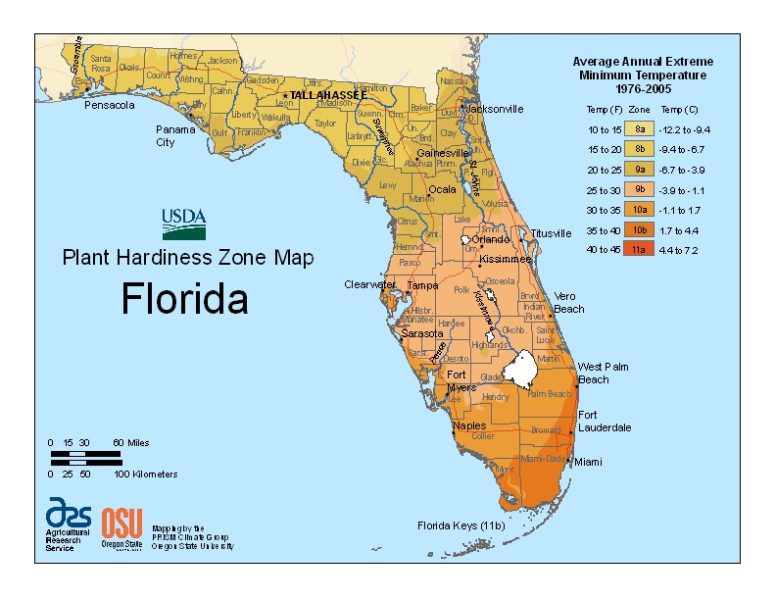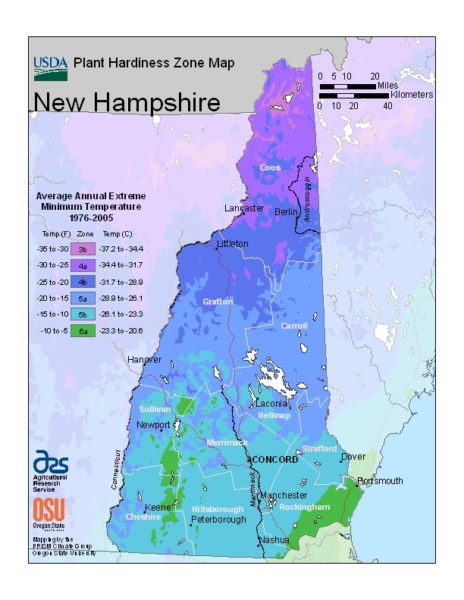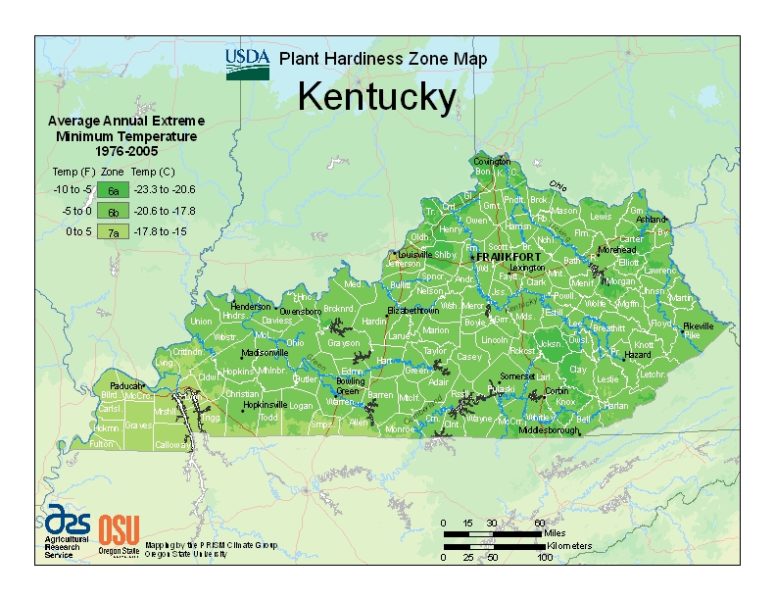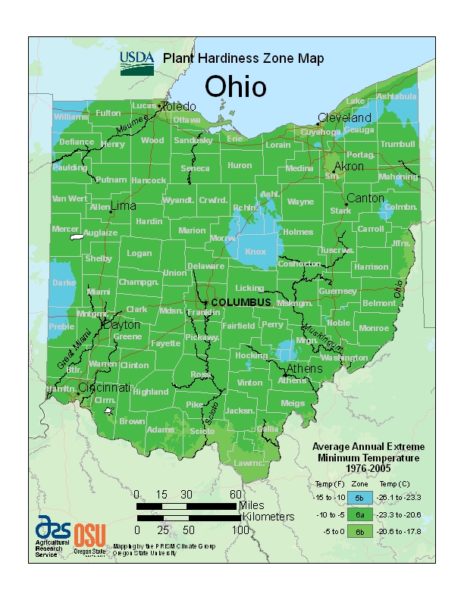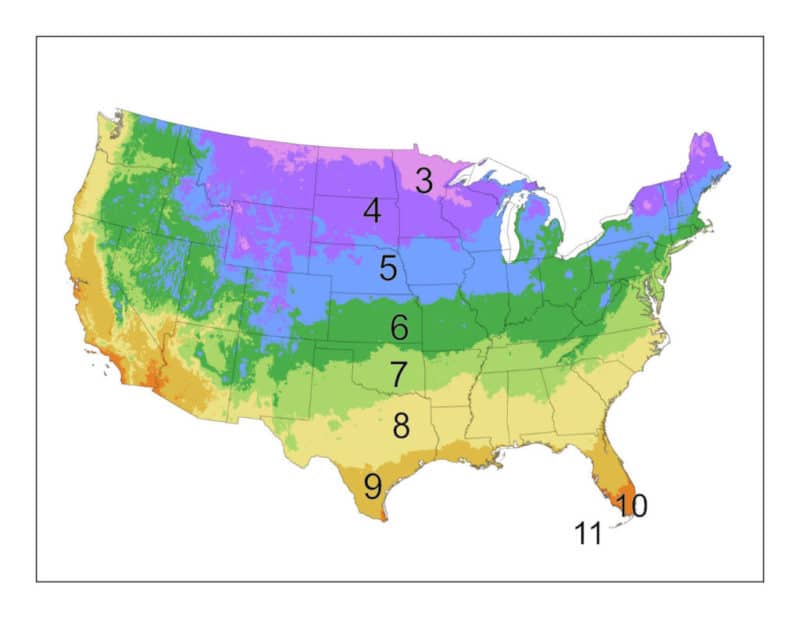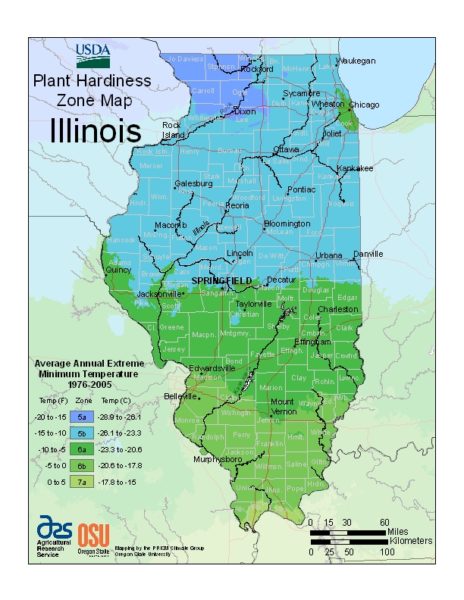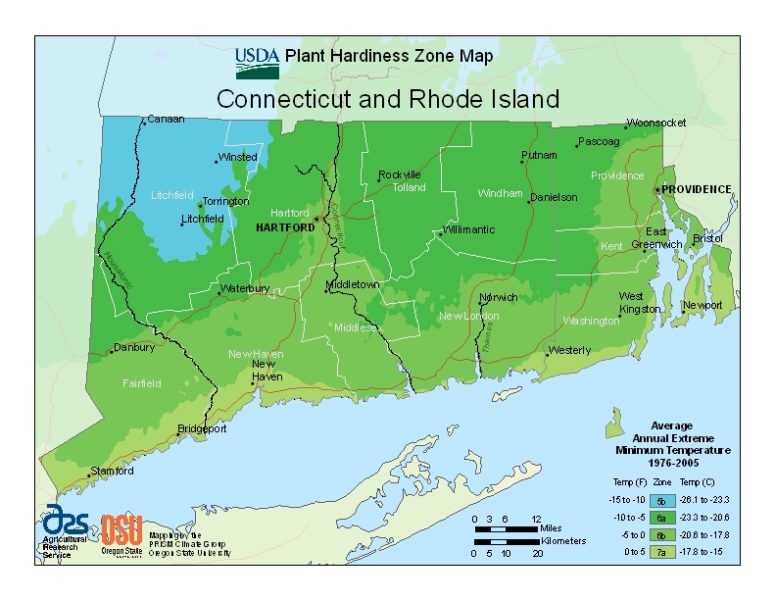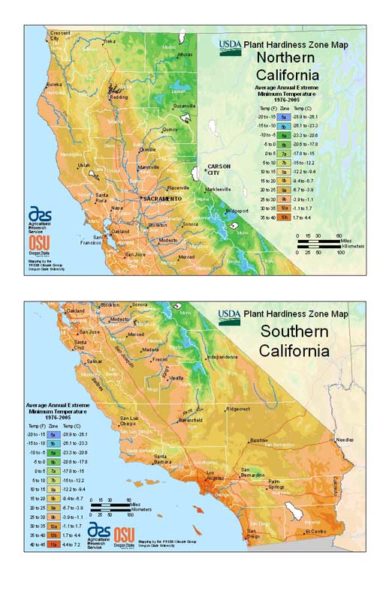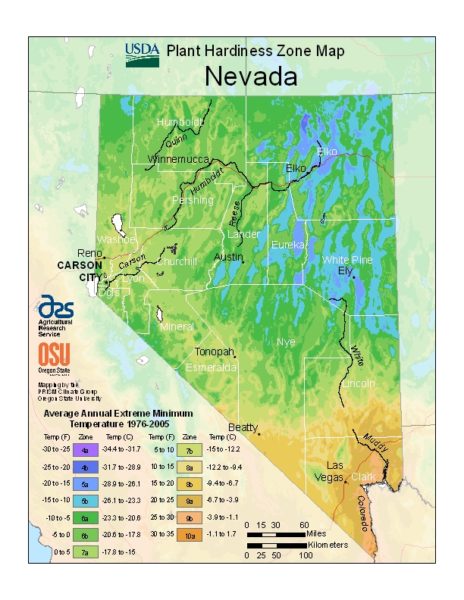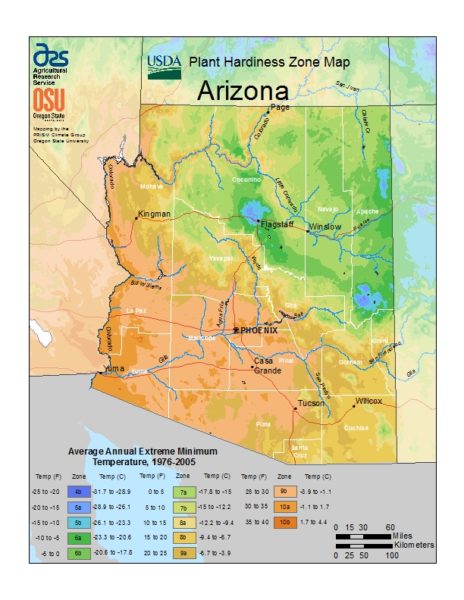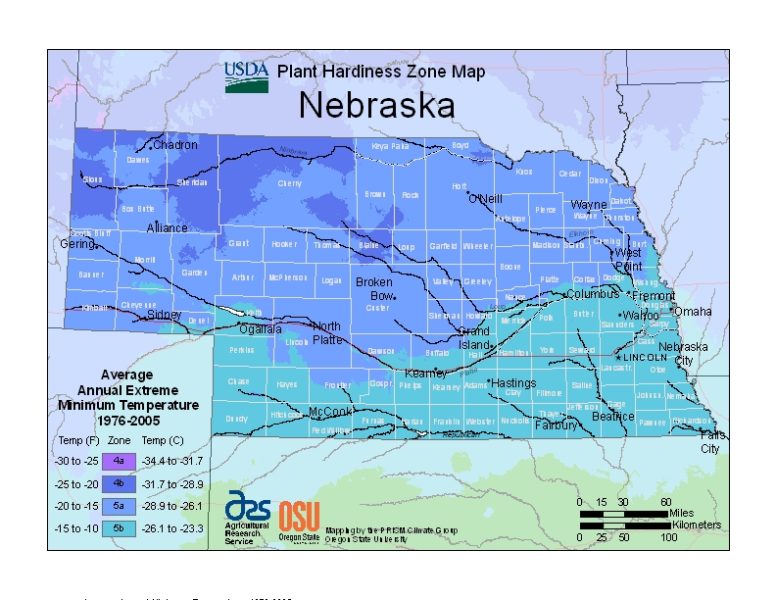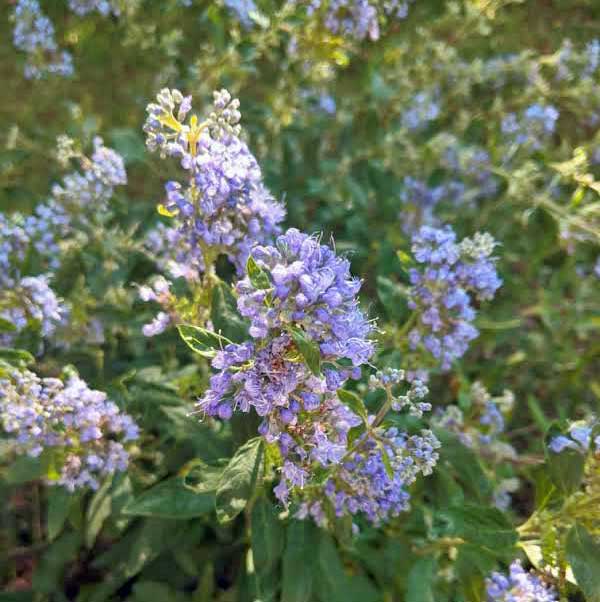
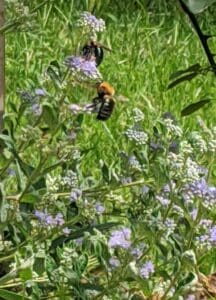 This Late Summer Bloomer is a Magnet For Pollinators
This Late Summer Bloomer is a Magnet For Pollinators
Blue blooms in nature are rare but Bluebeard shrubs (Caryopteris x clandonensis) deliver. These woody shrubs have enjoyed a recent resurgence with quite a few new varieties introduced over the past 5 years.
There are varieties that grow 5 feet and some varieties that stay as small as 1 – 2 feet . Most have their very distinguishable silvery-green foliage with coneflower-blue flowers in late summer. Some of the newer varieties have blooms that range in color from deep blue to lavender.
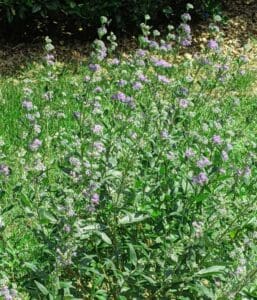 Bluebeard shrubs are not something you find often in garden centers. In most areas of the country, they are considered more of a perennial instead of a shrub. They will die down They can be considered semi-evergreen. We’re in Zone 7b and it stays green most winters. In colder climates it is more like a perennial since it could die back to the ground during prolonged cold snaps.
Bluebeard shrubs are not something you find often in garden centers. In most areas of the country, they are considered more of a perennial instead of a shrub. They will die down They can be considered semi-evergreen. We’re in Zone 7b and it stays green most winters. In colder climates it is more like a perennial since it could die back to the ground during prolonged cold snaps.
These are great border shrubs along a patio, walkway or even along a foundation They have a natural mounded growth habit. They are super easy to grow. They do like sunny areas, can thrive in different soil conditions & are drought tolerant once established. Deer won’t touch them.
Their silvery-green foliage is fragrant. Coneflower-like blue blooms sprout up in late summer, adding a touch of color when most other plants are done for the year.
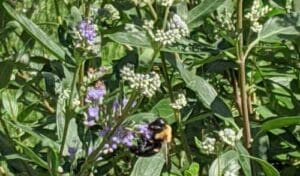 Just be a bit careful where you plant them, as I discovered by putting them around my patio. These flowers are magnets for pollinators. Bumble bees especially seem to love them. Late summer is also prime season for a variety of wasps, who also seek pollen.
Just be a bit careful where you plant them, as I discovered by putting them around my patio. These flowers are magnets for pollinators. Bumble bees especially seem to love them. Late summer is also prime season for a variety of wasps, who also seek pollen.
You can learn more about Bluebeard Shrubs from the Morton Arboretum here.
Blue blooms in nature are hard to find. Late summer color in your yard & garden even more so. Maybe consider adding a few this fall to enjoy
Compare Bluebeard Shrub Best Prices
- Unboxing From PlantingTree Nursery - February 6, 2022
- Everyone is Obsessed with this #1 Bloom Color for 2022 - January 21, 2022
- How to Choose Shrubs For Shade - October 6, 2021


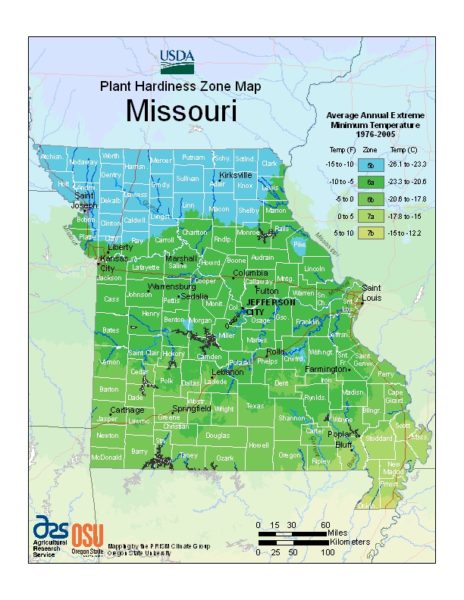

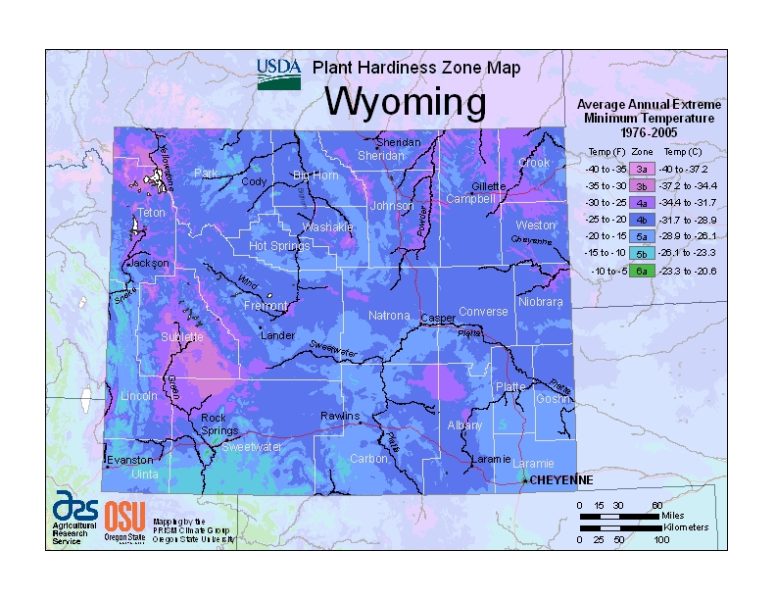

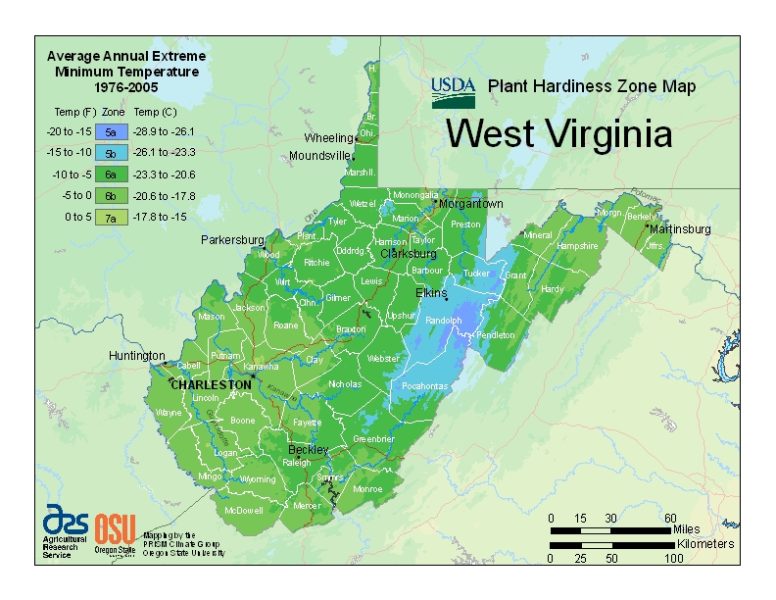



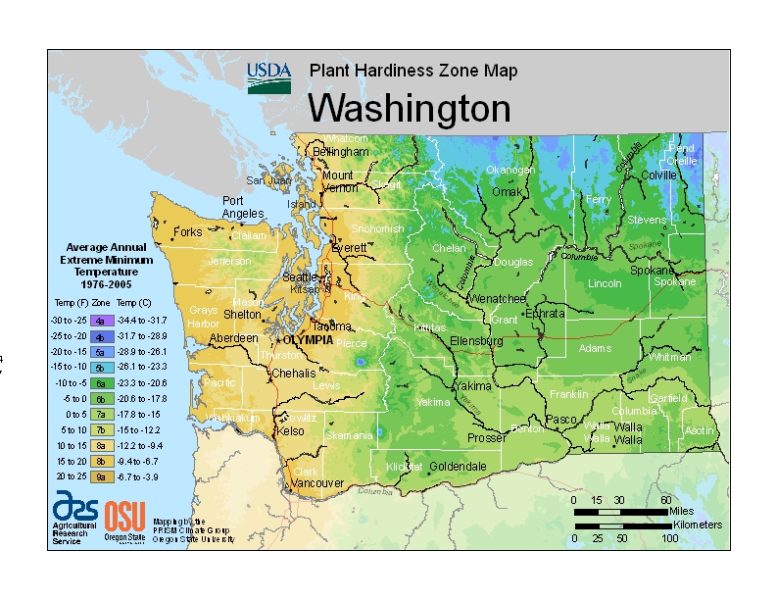
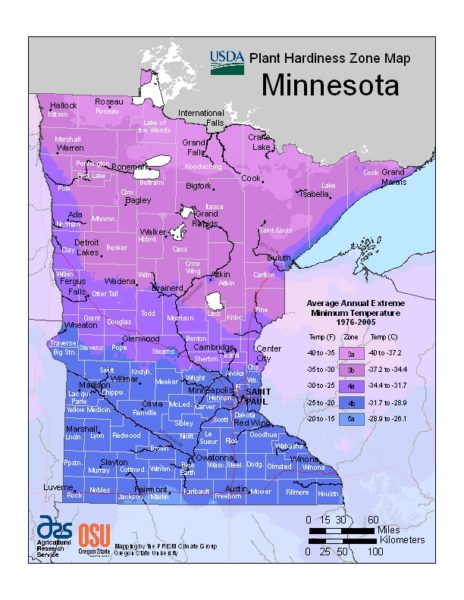





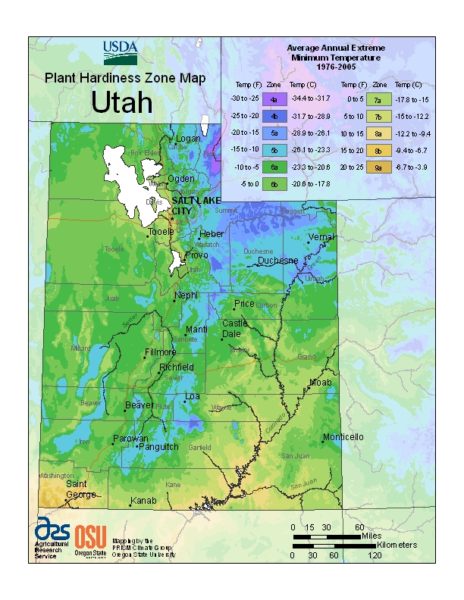
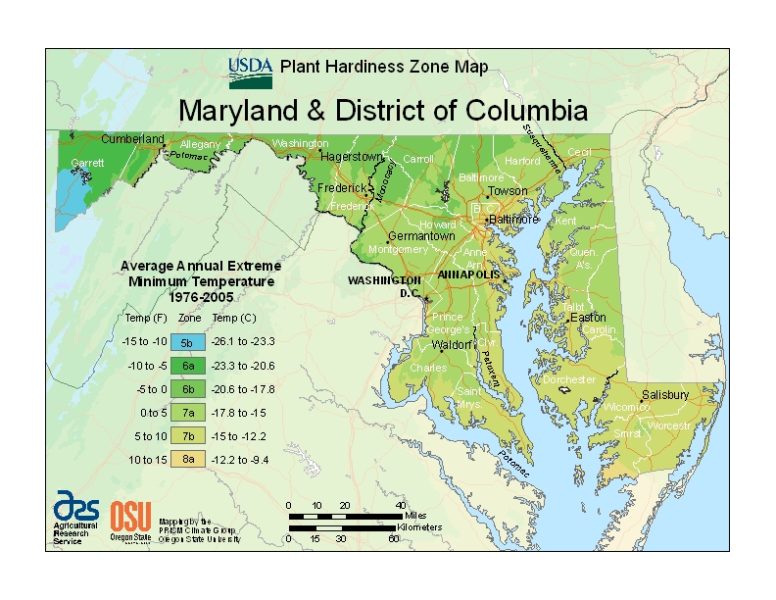





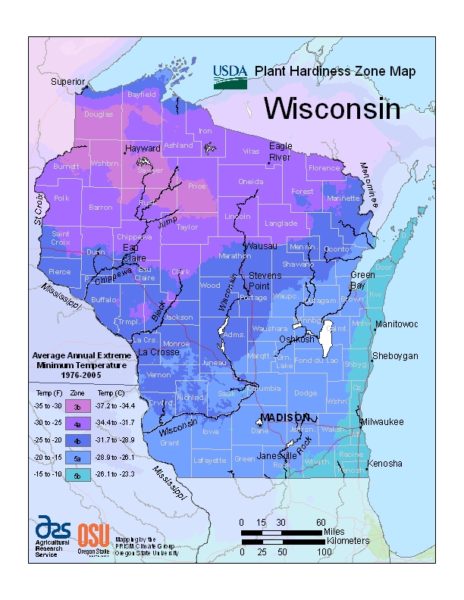 Wisconsin
Wisconsin